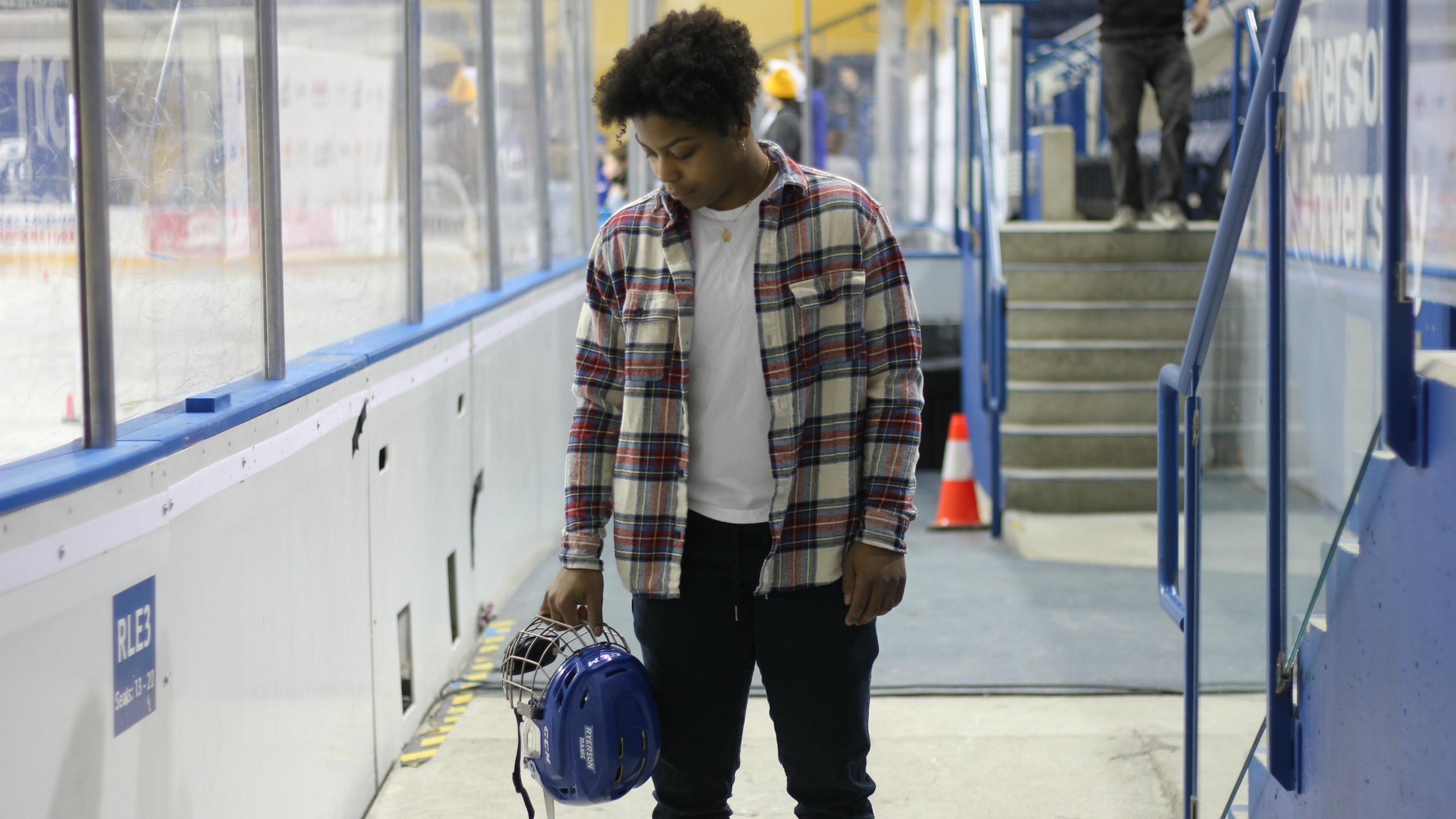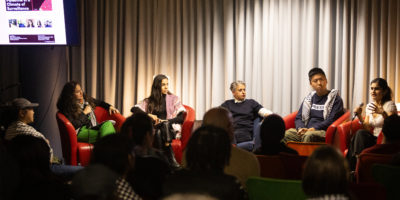By Will Baldwin
“Can I afford to be a pro?” asked Kryshanda Green, captain of the Ryerson women’s hockey team
It’s a question not many men can relate to.
Professional sports are the pinnacle of a childhood dream for millions if not billions of boys worldwide and for the young men around the world rarely, if ever, is money a deterrent at the highest level.
For female athletes though, that’s another story.
In a league like the Canadian Women’s Hockey League (CWHL) for example, the league’s salary cap for each team (the maximum total amount a team can pay it’s players) is $100,000 whereas the National Hockey League in 2018-19 operated at $79.5 million a year per team.
The contrast between the Women’s National Basketball Association and the National Basketball Association is no different with salary cap’s of $976,300 and $109 million respectively.
On March 8, the U.S. women’s soccer team filed a gender discrimination lawsuit against the U.S. soccer federation for pay equity and uneven working conditions.
There’s wage gap differences between women’s and men’s sports is severe, and it’s something that Green knows is an obstacle.
This spring, Green will graduate from Ryerson and will have to make a choice, continue playing the sport she’s loved since she was a kid or, let it go.
“If I could play hockey for the rest of my life I would,” said Green. “I’ve spent so much time on it, I love it to death.”
The biggest obstacle in her way? The money. A CWHL player can make a maximum $10,000 Canadian whereas the average salary in the NHL this season is just under $3 million USD.
Green is currently keeping her options open but if she decides to move on from hockey, she ‘might try to join the public sector or a non-profit organization’. No matter if pro-hockey is in her future or not, a full-time job certainly is.
“I would definitely need a full time job to sustain myself,” said Green. “I would have to give up time most importantly.”
Green is one of many women’s hockey players who have to consider another path in case hockey doesn’t work out. Someone who can relate to what she’s going through is former teammate, Ailish Forfar.
“Can I afford to be a pro?”
In her third year as a Ryerson student, Forfar finished her U SPORTS eligibility at Ryerson last season with the women’s hockey team. While she finishes her Sport Media degree she is also an assistant coach still here at Ryerson with the Rams women’s hockey team.
On top of that, Forfar is playing professional hockey for the Markham Thunder of the CWHL.
Her decision to play professional hockey this season was not something that came immediately.
Forfar is far from the only busy member of the Thunder, as all of her teammates have a separate job to supplement playing professional hockey.
“We have some who are teachers, we have a couple who are firefighters so everyone’s schedule is all over the map,” said Forfar.
Thanks to the players elaborate personal schedules and money restraints, the Thunder only practice twice a week, generally late at night.
These factors along with other more personal ones, made making the decision to enter the CWHL a process that took time for the former Rams captain.
“It was something I really had to evaluate,” said Forfar. “I had already made a commitment to coach at Ryerson and continue my degree so obviously those take a lot of time.”
One of the reasons the decisions wasn’t immediate for Forfar though, was because as a child “it wasn’t something I grew up with,” explained Forfar and so with money being an issue.
Because they don’t make a lot of money, it took something else to motivate her to continue with her hockey journey.
“It’s not about the money, it’s about the other things. For me I was inspiring other people (other girls) to play hockey.”
It’s a unique league, full of top level talent.
“It’s kind of sad there’s not a lot of people who know about it,” said Forfar. “For example, last weekend there was 18 Olympians between two teams, you can’t watch that anywhere else.”
With money being an issue, it can take motivation from an outside source to get a female athlete to pursue her sport outside of university, a far cry from the NHL or almost all other male professional leagues around the world.
According to Green, this difference between male athletes and female athletes is a story that’s all too familiar for her and many others.
“Women for some reason, we don’t get recognized that we are going to the gym as well,” explained Green. “We are running, putting in that extra work, our commitment is completely there, and I think overall people don’t see the hard work as on the same scale as the men.”
“It’s not about the money, it’s about the other things. For me I was inspiring other people other girls to play hockey”
Forfar agrees with her former teammate saying, ‘I think as a female athlete, we always feel second best’.
This culture isn’t just something that’s felt just by USports level athletes, it’s a real and pressing issue at every level.
Piper Gilles represented Canada in Ice Dance at the 2018 Winter Olympics and says you see it everywhere.
“I was talking to a runner the other day (she’s a sprinter) and she said getting sponsorships for herself is so hard but her teammate, who’s a guy, he can get sponsorships no problem,” said Gilles in an interview with the Eyeopener in February.
Gilles, who is a former Ryerson Student who had to put school on hold to focus on skating, thinks it’s a societal issue in sports.
“When you’re a female athlete in a sport like figure skating, you’re expected to be something,” said Gilles. “You’re expected to be graceful, you’re expected to be lean. There’s all these expectations of a female figure skater and those things definitely become apparent when you get older.”
Gilles though is trying to bring change to the way female athletes are perceived and doesn’t want to focus on the negative side but rather, the positive side of female athletics.
“I’d rather focus on the good stuff and put light on the female athlete because there’s a lot of incredible ones.”
Bruce Arthur is a long-time sports columnist at the Toronto Star and contributor with TSN and couldn’t agree more on the ability of female athletes.
“Women’s sports honest to goodness can be as compelling as anything men produce,” said Arthur. “Women don’t compete with any less ferocity. They don’t put any less heart into it, they put as much into it and feel the same joy and pain and human emotion when it happens and that is immensely compelling.”
The issue is though that many don’t get to see it. Women’s sport is rarely covered with the same money, time or effort as men’s sports and it’s a difficult issue to overcome due to lack of media funding and perceived interest.
According to the United Nations Educational, Scientific and Cultural Organization (UNESCO), women’s sport receives only 4% of coverage throughout a given year.
This season for example, just four CWHL games will be broadcast nationally in Canada, including the All-Star game and Clarkson Cup (the league final).
Currently, the WNBA doesn’t have a national TV deal in Canada, meaning to watch games the only way is through buying a subscription from the league.
“If I could play hockey for the rest of my life I would,” said Green. “I’ve spent so much time on it, I love it to death”
Nathalie Cook is the chair of the board of directors at the Canadian Association for the Advancement of Women and Sport and Physical Activity (CAAWS) and thinks this may just be a lazy excuse.
“If you schedule all the women’s events at the worst times and then say no one watches well, that’s not really fair,” said Cook.
The 2015 FIFA Women’s World Cup Quarter-Final between Canada and England got 7.5 million unique Canadian viewers to tune in to some or all of the match according to Bell Media.
CAAWS is working towards making Canada a more equal place athletically for everyone as still, many issues exist even at the grassroots levels.
“At the same soccer fields for most of the clubs in Toronto, first all the boys and men’s teams pick the fields and times and then the girls so what do you think happens?” said Cook.
Even with the work organizations like CAAWS are doing and the continued growth of leagues’ like the CWHL as Arthur put it best: ‘progress is slow man’. This slow process may unfortunately force high level athletes like Green to move on.
“It’s just not a viable option for so many athletes,” said Green. “At some point you’ve got to realize that either you have to move on from it or evolve within it and until the times catch-up and start participating in a little more pay equity, it’s just money is in the middle.”











Chris Gemmill
Watched the Ryerson women’s team all year and they have never received their due ! Men’s game sold out women have hand full! It is very sad because the level of skill and dedication these young women bring to the game is impressive and they don’t get the same recognition as the men do ! Got to watch Allish and Crash play along side my nice the last two years and all the girls on the team and league make it exciting and a pleasure to watch! Some thing needs to be done to even the difference up and to motivate more people to come out to watch and enjoy their brand of hockey! This news makes me sad because this is were our team Canada women’s hockey players come from! Across this country and they deserve an equal chance at success!
kwok pun chan
Better switch to other Game played on ice (equal pay?) – curling